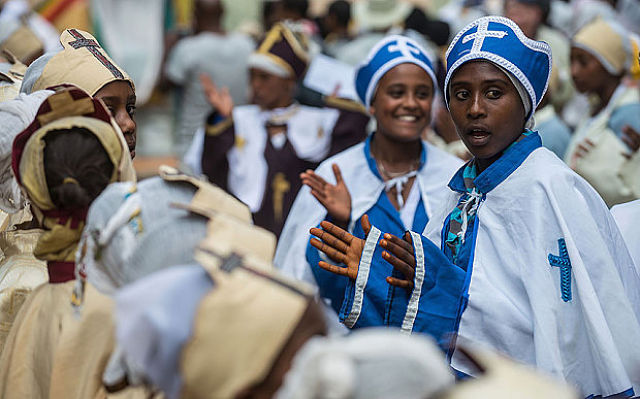By Anna Murphy
You know you are somewhere very special when even a drive to the airport is enrapturing. It was our last day in Ethiopia, and we were on our way to catch an internal flight from Lalibela to Addis Ababa, en route to London.
We had been to Lalibela – one of the most celebrated stops on the so-called northern circuit of the Ethiopian Highlands – to see its stone churches. And remarkable they were, carved into and out of the pink-hued rock between the 12th and 15th centuries, both delicate and monumental, and still very much alive – full of priests and monks and nuns and hermits and worshippers, all of them wrapped in white, as every good Ethiopian Christian is when he or she visits church.
Virtually every day of the year there will be a church somewhere in Ethiopia celebrating its saint’s day, but it’s best to time your visit to coincide with one of the great Orthodox Christian festivals, such as Easter. Known as Fasika, it usually occurs a week to two weeks after the Western Church’s Easter. It follows eight weeks of fasting from meat and dairy, and culminates in a church service on Easter eve lasting several hours and ending at 3am. Afterwards, worshippers break their fast and celebrate the risen Christ.
My own visit coincided with Timkat, in January, one of the most important festivals of the year. It’s a kind of mass baptism in which locals gather early in the morning by their church’s pool (each church has one) to be splashed and sprayed with holy water. It was such a joyous thing to witness, as everyone – from very young to very old – excitedly waited en masse for jugs of water to be thrown out over the crowd.

Faithful dressed with traditional clothes attend the Timkat celebration on January 18, 2015 in Addis Ababa. (Photo: Alamy)
Read and see more photo at Telegraph.co.uk »
—
Join the conversation on Twitter and Facebook .